This article originally appeared on the open democracy website.
In April, President Iván Duque’s government proposed an overhaul of the tax system. Colombians responded with a national strike later that month. The strike was met with disproportionate use of force and human rights violations by police, triggering a wave of protests across the country throughout May, June and July.
The massive participation in the protests surprised a government that was already under fire for its lethargic handling of the pandemic. The profound deficiencies of Colombian democracy became glaringly apparent, not least the fact that the national police force, including the Mobile Anti-Riot Squadron (ESMAD), is one of few in the Americas that sits under the defence ministry. After a recent visit to Colombia, the Inter-American Commission on Human Rights condemned the “excessive and disproportionate” use of “lethal force” and called for the separation of the police and the military.
The Colombian government seems to be turning a deaf ear. Social tensions remain high and could flare up again at any moment, especially if the repressive violence that has already claimed dozens of lives continues.
The protests have left us with striking images of the harsh way the Colombian authorities have responded to the people. At the same time, the protesters have shown creativity and courage.
Photographer and reporter Andrés “trifulkart” Trujillo tells the story of months of social unrest in Colombia through a series of evocative images.
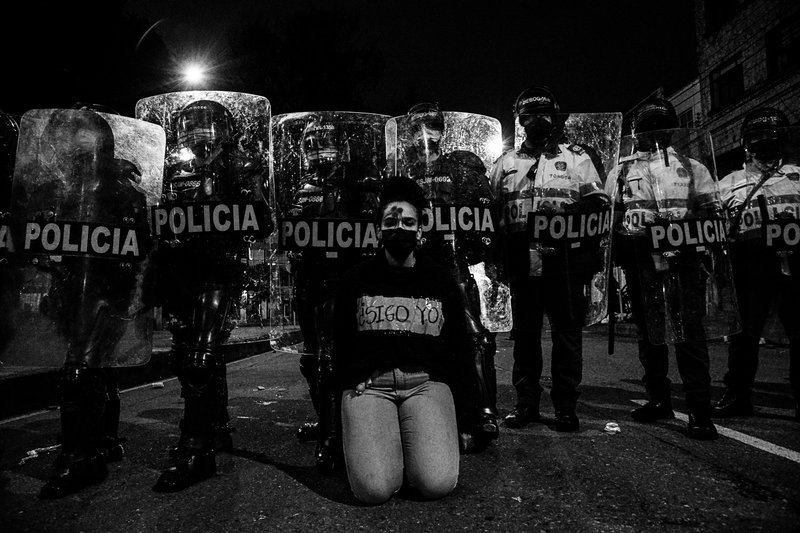
Am I next? This is one of the questions that comes up constantly as the country is faced with a growing number of missing, mutilated and beaten protestors. Massive demonstrations over issues of economic reform and corruption swept the country in the autumn of 2019. This year’s protests are a sign of the deep anger of a frustrated public in one of the most unequal countries in the world.
A 2018 report by the Organization for Economic Cooperation and Development said that it would take 11 generations – the longest of 30 countries studied – for a poor Colombian to approach the mean income in his or her society. Anyone present at a demonstration can end up as a statistic, no matter who you are – a paramedic, press, human rights activist or an ordinary citizen exercising your right to protest. No one knows who will be next.
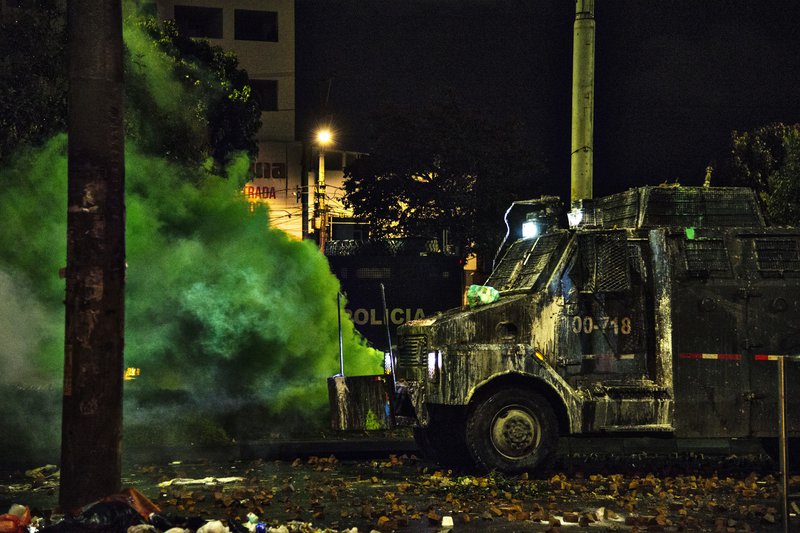
Riot police use various methods to disperse protestors, but don’t always succeed. The pepper spray is often past its expiry date and can be harmful to people’s health.
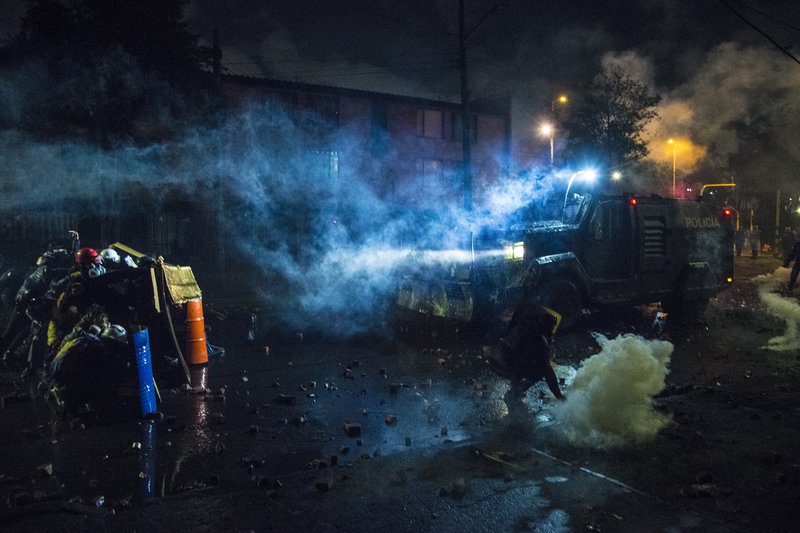
Many of the peaceful demonstrations of May and June 2021 ended in violent clashes with the police. ESMAD, the Mobile Anti-Riot Squad, used a gas that induced vomiting. Colombia’s government has no budget for education or health, much less for culture, but it finds resources to repress the people who are speaking out about structural inequality, poverty, land reform and lack of opportunity.
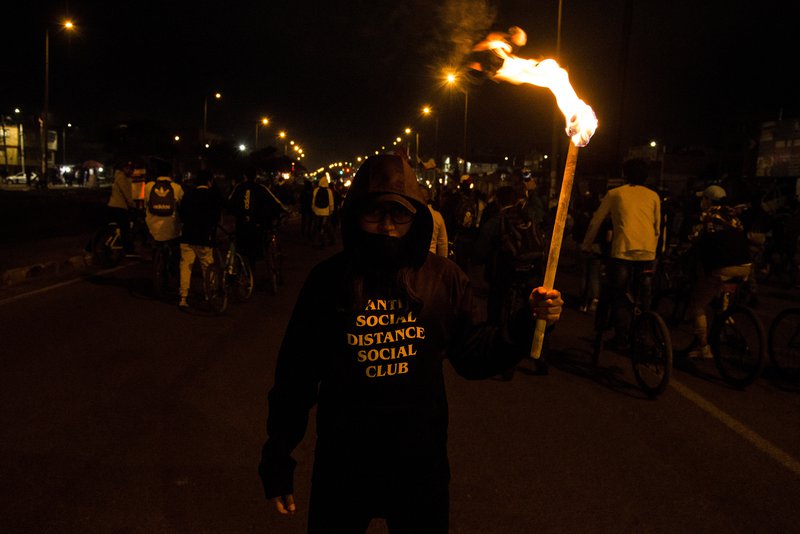
Fire often features in the confrontations between police and protesters. It comes from both sides. In the midst of vigils, there can be stun grenades, torches or Molotov cocktails. A flame burns within the people, which brought thousands on to the streets in spite of the pandemic.
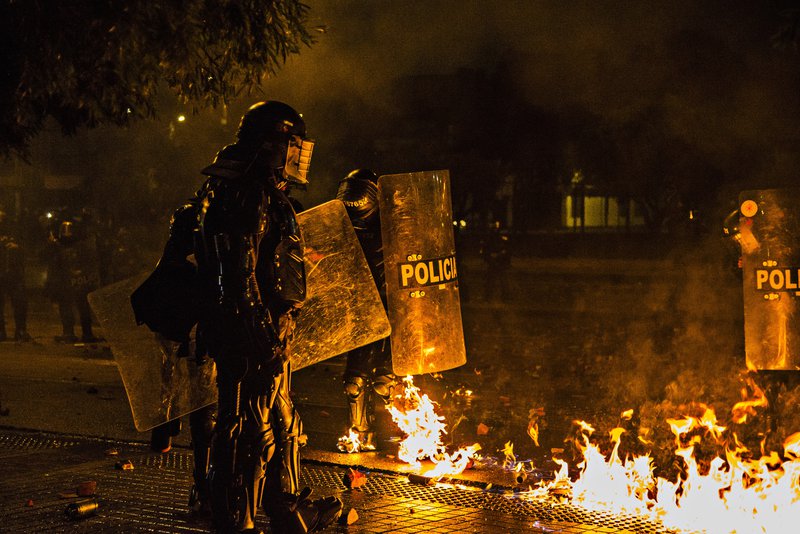
The violent confrontation is dangerous – for both sides. An ESMAD agent on fire in Suba district, Bogota.
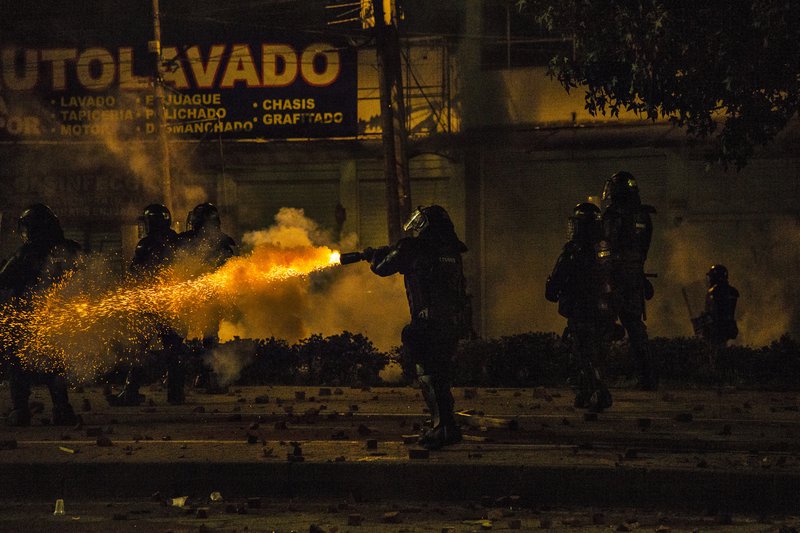
Police brutality is indiscriminate and common. The image shows how the police violate international protocols on the use of non-lethal weapons, shooting directly at protestors rather than firing shots upwards to avoid injuries that could be fatal. According to Indepaz, an NGO in Bogota, 80 people have died as a result of this kind of trigger-happy behaviour by the police.
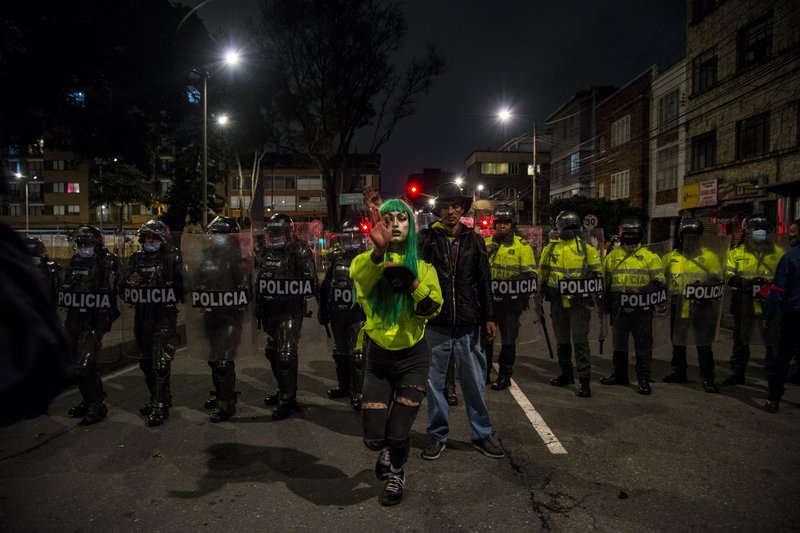
The LGBTQI community has come out in support of the protests and has been demanding visibility in a country that is hostile to their identities. According to the Trans Action and Support Group and the newspaper El Espectador, 20 trans women have died in Colombia this year. That is why the anger of one of the country’s most marginalised communities is seen on the streets.
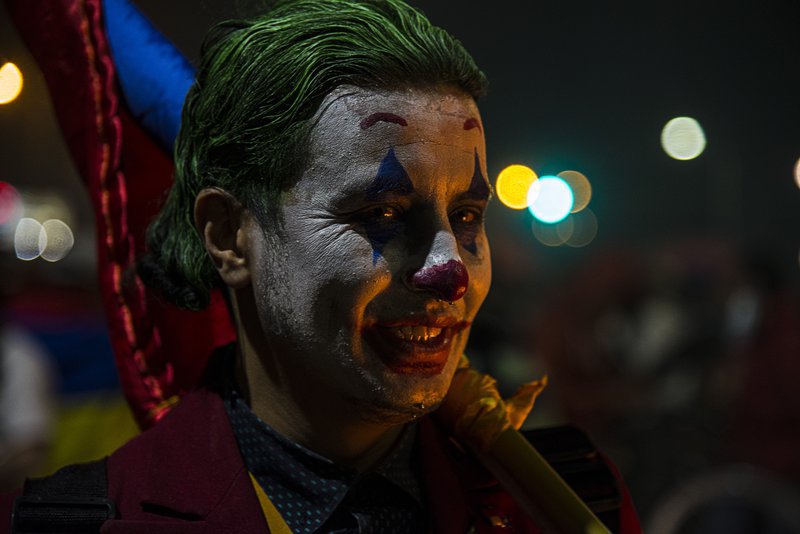
A protester dressed up as the Joker, a figure that embodies popular rebellion, near the iconic Monument to the Heroes in Bogota. Many came out to demonstrate in an artistic and creative way.
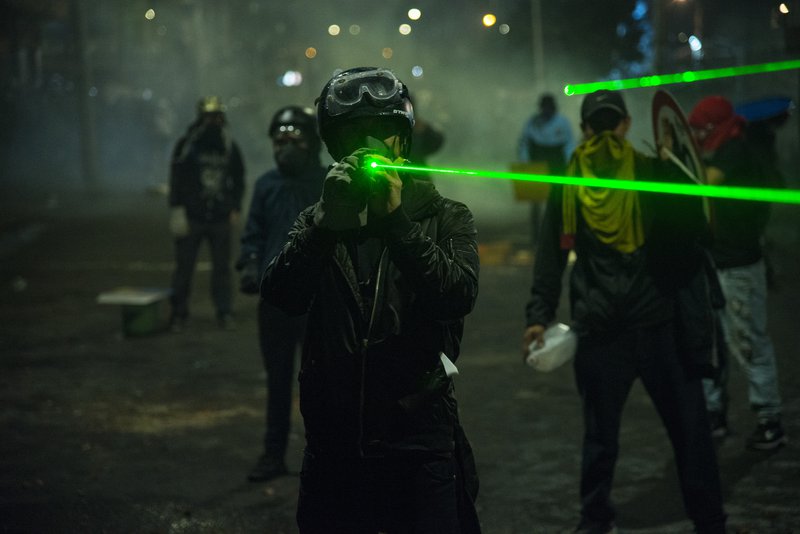
One of the most profound lessons from the 2019 and 2020 protests in Hong Kong was the use of technology – apps, tweets, and laser pointers to blind the police.
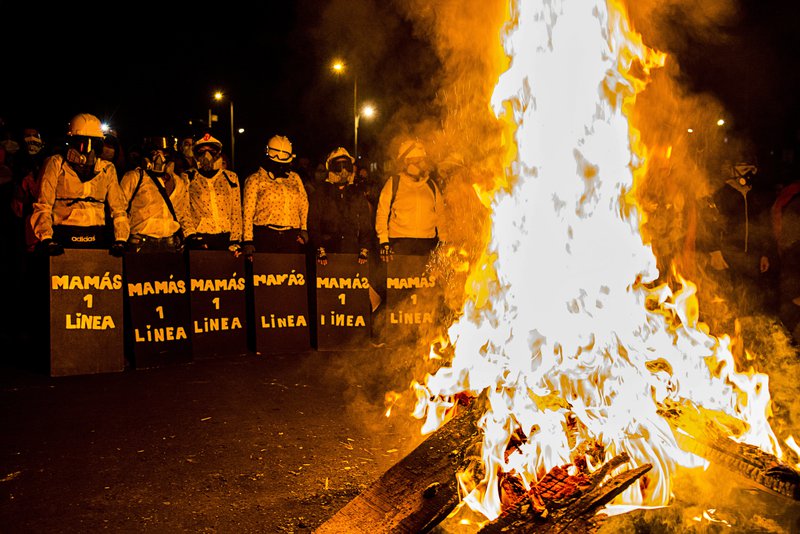
The mothers of some of the protestors came out to support them, demanding an end to mistreatment, detention and disappearances.
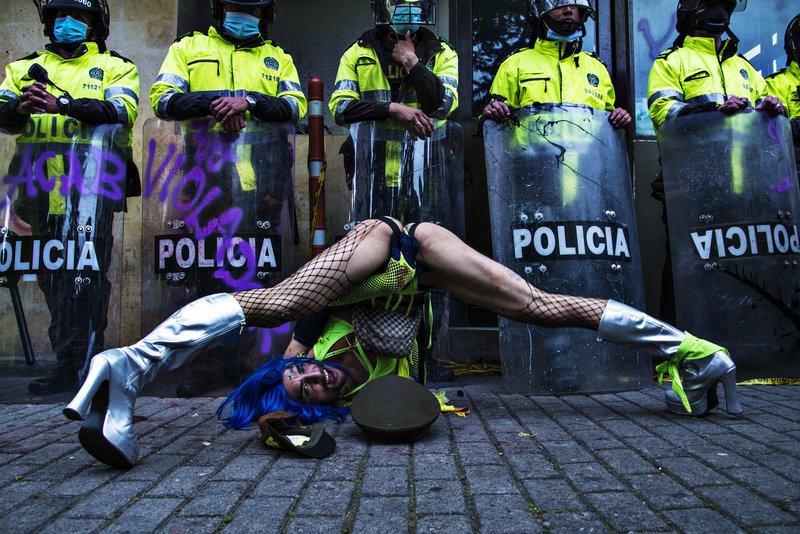
A protester performing a “vogue” dance in the hippies’ park, Bogota. Tired of the English acronym “ACAB” (All Cops Are Bastards), LGBTQI protesters created a new one, “TOLOPOSUNGO”, which is short for “all cops are Gonorrhea” in Spanish.
Art Book Review Books Campism Capitalism China Climate Emergency Conservative Government Conservative Party COVID-19 Creeping Fascism Economics EcoSocialism Elections Europe Far-Right Fascism Film Film Review Fourth International France Gaza History Imperialism Israel Italy Keir Starmer Labour Party Long Read Marxism Marxist Theory Migrants Palestine pandemic Police Protest Russia Solidarity Statement Trade Unionism Trans*Mission Transphobia Ukraine United States of America War

